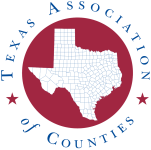County Magazine | January 29, 2024
Feral hog abatement programs are working, but will they be enough?
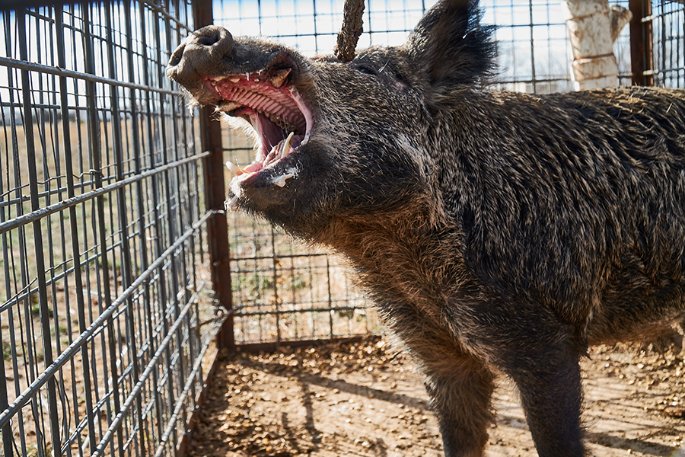
Michael Bodenchuk says he spends almost all day every day thinking about feral hogs and how to get rid of them.
The director of Texas Wildlife Services oversees the management of several species that can harm the state's agricultural and livestock resources, as well as its waterways and even airports, but feral hogs, with their rapid reproduction rate and lack of natural predators, have quickly climbed to the top of his worry list.
More than 3 million wild pigs in the state cause in excess of $500 million in property and crop damage each year, and those are conservative estimates, according to Texas Wildlife Services. They dig up crops, tear down fences and introduce disease to livestock.
With Texas having more wild hogs than any other state, what's a county to do?
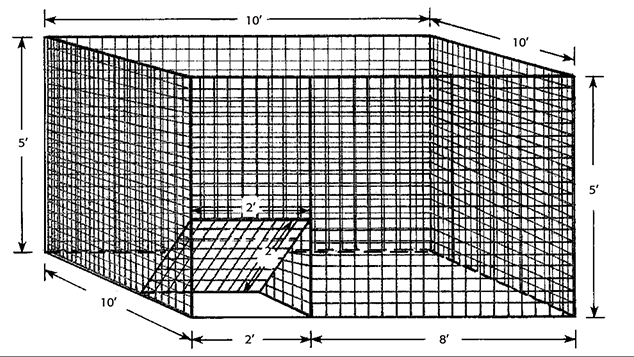
Many counties have a "county bounty" program, paying $5 to $15 for a tail or ears as proof that you've killed a hog, but "it's not a terribly effective way to use your money," said Bodenchuk, who issues nearly $96,800 a year in grants, funded by a combination of federal and state money, to counties that come up with innovative feral hog removal programs.
"I have about $100,000 in grants and I get about $400,000 worth of requests, so I'm disappointing more people than I'm able to help," he said.
One of the more effective strategies is the smart trap loan program, which allows landowners to borrow a trap to remove wild pigs while they are still alive.
"At $7,000 to $8,000 per trap, no farmer can afford that, but if they can check out a trap and use it for a few weeks, we have big hope for that."
In 2022, one of those grants went to Jefferson County, a coastal county where agricultural products such as rice, cattle and hay bring in $121 million in annual revenue. The county bought corral traps that landowners could borrow to help reduce the population in rural areas and around the city of Beaumont, where hogs have been digging up yards and golf courses and even getting onto the tarmac at the airport. Some of the trapped pigs ended up feeding alligators at one of the local gator farms.
With the help of a grant-selection committee, Bodenchuk looks for creative solutions to a problem that affects every county in the state. Sutton and Edwards counties, for example, use grant money to pay for the use of helicopters that carry experienced crews to shoot the hogs from above. In La Salle County two years ago, county officials requested money to buy metal for the welding class at one of the local high schools so students could build pig traps to sell or loan out to local landowners. "For a few thousand dollars' worth of metal, you can create a whole new generation of pig trappers," Bodenchuk said.
"There's not enough government money to kill all the pigs in Texas."
— Michael Bodenchuck, director of Texas Wildlife Services
About 130 counties pay full-time wildlife damage management technicians to manage predatory and pest species. These government trappers play an important role in maintaining a balance between the needs of an ecosystem and those of the local economy, but it's important that counties do community outreach.
Some trappers, for instance, will keep only the hogs that are at least 80 pounds to send to the slaughterhouse, and they'll release the smaller ones, which doesn't keep the population under control.
"We don't care if the landowner takes them to the holding facility or shoots them in the trap, but we don't want them released," he said.
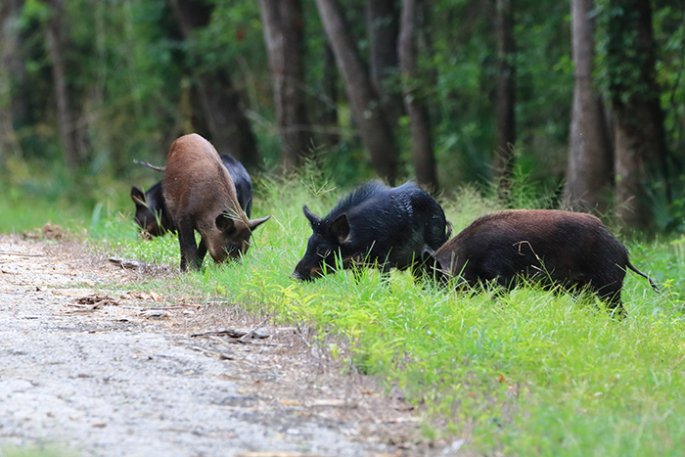
Dozens of counties host feral hog abatement classes, typically through the Texas A&M AgriLife
Extension Service, which have been attended by thousands of landowners. In these classes, educators share information about feral hog behavior, legal control options and procedures.
Bosque County extension agent Chelsea Dorward teaches a quarterly class that is a requirement to participate in the county's bounty program, which started in the fall of 2021 and pays $15 per tail.
"The class is designed to make sure everyone starts on the same playing field with knowing the basics of trapping options, biology and laws," Dorward said.
"By having each participant come to a face-to-face session, we can ensure that everyone participating hears the same information."
On the third Tuesday of every month, hunters can drop off proof of their kill. Sometimes, just a couple of people show up, but other weeks, as many as a dozen people, including the occasional teenager, stop by with tails in hand.
"Depends on how the pigs are running," said office assistant Julie Snyder, who is usually the one to receive the tails. "We prefer for them to be frozen."
In counties around the Canadian River in the northern part of the Panhandle, landowners and management officials removed 78% of the wild hogs over several years, Bodenchuk said, through a combination of these strategies.
Many of these county-led solutions are working, but perhaps not as fast as the hogs are reproducing, Bodenchuk said.
A few years ago, hunters and landowners across the state killed up to 51,000 feral hogs in a single year, but that number has been closer to 40,000 in recent years.
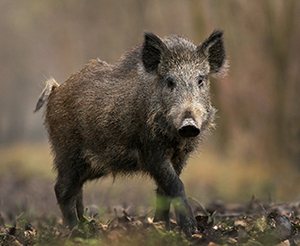
Texas landowners. (Credit: Texas Wildlife Services)
